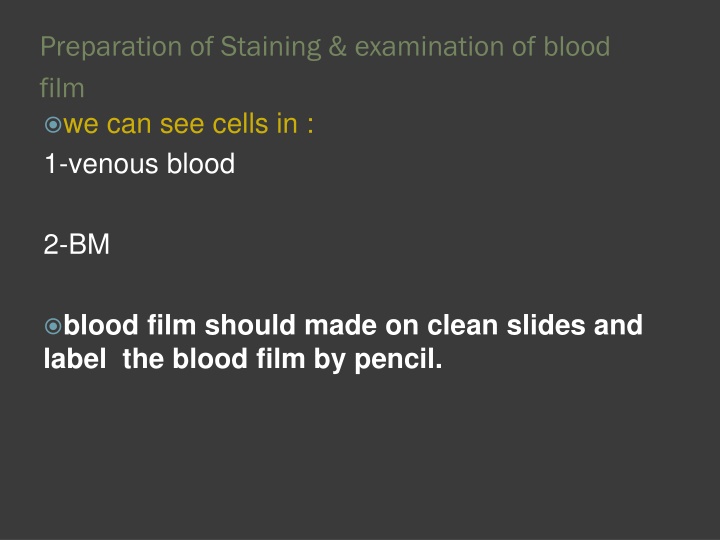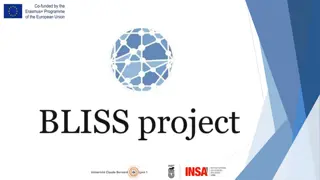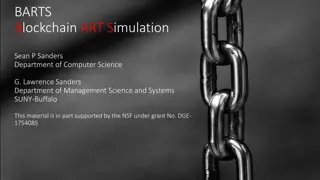Arbitrating Blockchain & Smart Legal Contract Disputes
American Bar Association Section of Dispute Resolution presents insights on arbitrating blockchain, smart contracts, and smart legal contract disputes. Topics cover the importance of trust, blockchain distributed ledgers, and the distinction between smart and legal contracts. Learn about current technologies, technical and legal issues, and arbitration clauses in blockchain-related disputes.
Download Presentation

Please find below an Image/Link to download the presentation.
The content on the website is provided AS IS for your information and personal use only. It may not be sold, licensed, or shared on other websites without obtaining consent from the author.If you encounter any issues during the download, it is possible that the publisher has removed the file from their server.
You are allowed to download the files provided on this website for personal or commercial use, subject to the condition that they are used lawfully. All files are the property of their respective owners.
The content on the website is provided AS IS for your information and personal use only. It may not be sold, licensed, or shared on other websites without obtaining consent from the author.
E N D
Presentation Transcript
Preparation of Staining & examination of blood film we can see cells in : 1-venous blood 2-BM blood film should made on clean slides and label the blood film by pencil.
Blood film is important in: 1-haematological diagnosis as in anemia and leukemia to see the morphology of the cells. 2-WBC differential count to see the account of each type of WBC. 3- estimate the number of platelets
Films may be spread by hand or by automated slide spreader. Blood film prepared from fresh blood ,use anticoagulant (EDTA) by using capillary tubes. No depressing from sample i.e clot not short, not long.
2 types of blood film: 1- Thick blood film big drop Used for parasite examination. e.g:Malaria 2-thin blood film optimal shape of thin blood film head Tail Body optimal Nb of cells
Staining of blood film : Staining of blood film : Romanowsky stains are universally employed for routine staining of blood film. It depends on 2 components : 1-basic part (azure B include methelene blue ) methelene blue different than new methelene blue used in rectic count 2-acidic part (eosin Y)
Mechanism by which certain component of cell stain with particular dyes and other component can not stained 1-Azure B (Basic part of stain) bound to acidic part of the cell as nucleus and gives it the blue colour. 2-EosinY(Acidic part of stain ) bound to basic part of the cell as protein, cytoplasm and Hb and give them the red colour
Blue nuclei has neucleic acid basicpart (azure B) Red basic part Cytoplasm and Hb acidic part ( eosin y) Red orange Eosinophilic granules (alkaline) Acidic part (eosin Y) granules Violet Basophil has heparin which is acidic basic part(azure B)
Eosinophilic granules (alkaline) Basophil has heparin which is acidic
Types of Romanosky stain: Leishman stains widely used & simple Wright stain widely used & simple May grunwald stain Jenners stain rarely used(simplest) Giemsa stain most complex rarely used
staining steps: 1-fixation of blood cells to protect the cells from haemolysis due to washing. If the cells are well fixed the cells resist the action of water Done by: a- methanol(2 min) b-undiluted stain (neat stain) 2-staining 3-washing
Method of leishman&wright stain: 1-dry the film 2-1 volume of Pasteur Pipette of methanol for 2 min (fixation step) 3- gradually 2 volume of Pasteur Pipette of stain (staining step) for 5-6 minutes 4-wash the slide using the buffer PH=6.8 (washing step) 5-Rinse the slide with water
Factors giving rise to faulty staining Appearance causes 1-impure dyes 2-0ver used 3-incorrect preparation Too blue or pale staining 1-impure dyes 2-excessive washing in buffer Too pink 1-stain solution in uncovered jar 2-stain solution is not filtered Stain deposit on film Blue background 1-inadequate fixation 2-blood collected into heparin tube























